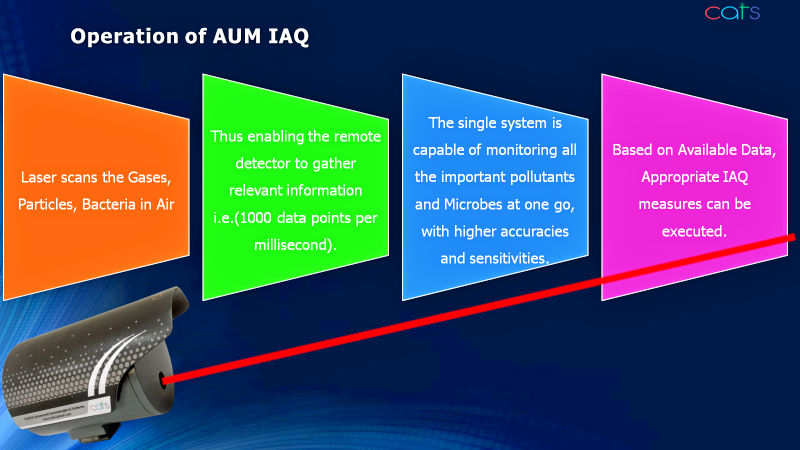ATTRIBUTE
Major Break-through in Microbial Identification by AUM
- Generally, it takes anything between 24-72 hours to identify a particular bacteria or Fungi.
- Swaps of microbial / spices are taken to Microbiologist lab and then identification are done. Online equipment?s that are available are not only expensive but also takes time to give results.
- AUM IAQ patented photonics technologies identifies Microbial that provide
- Real time / in situ identification with higher accuracy.
- Validated Bacterial and Fungal library.
- No Retesting required and hence saving in time.
- Reduced dependence on outside service.
- Process
